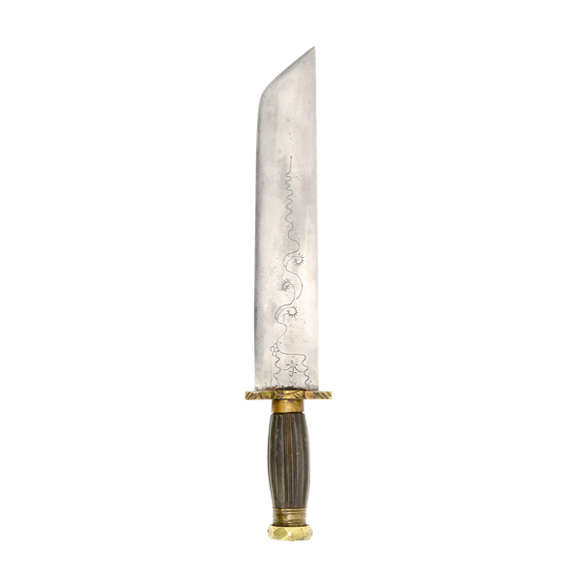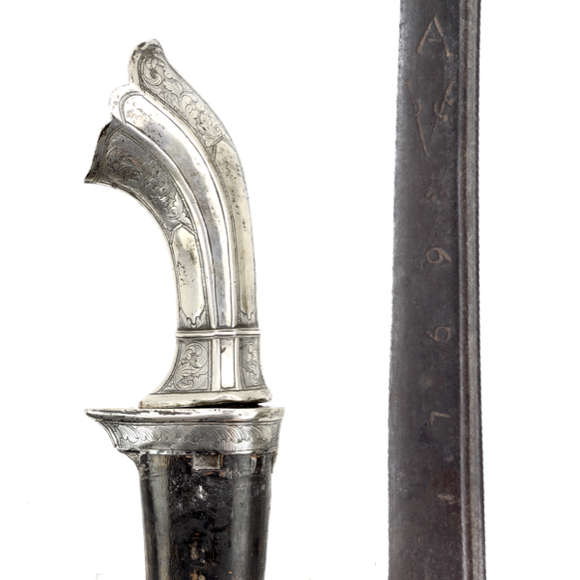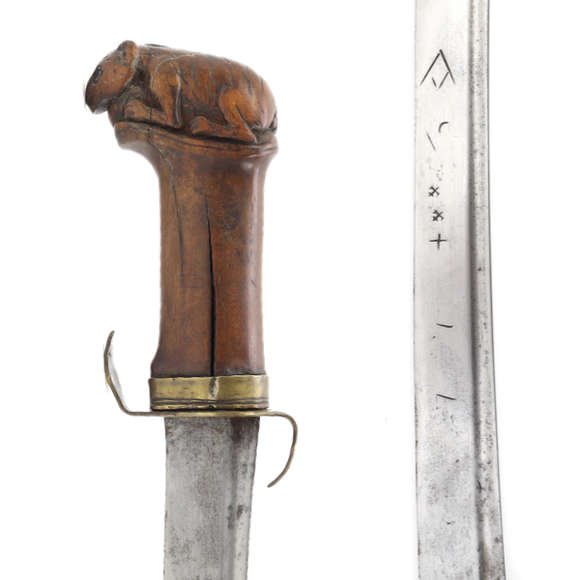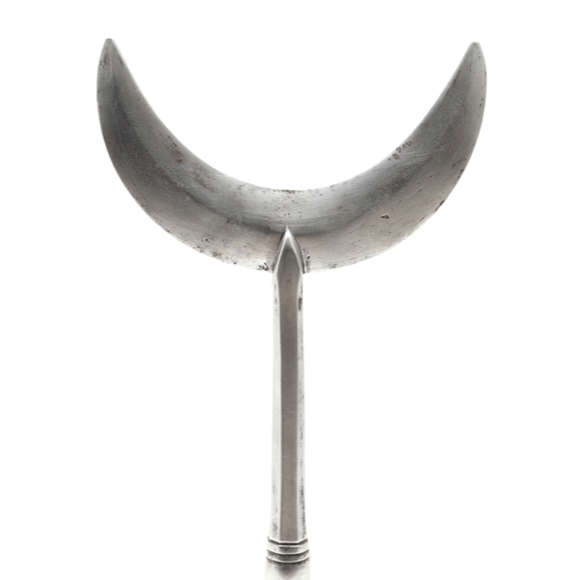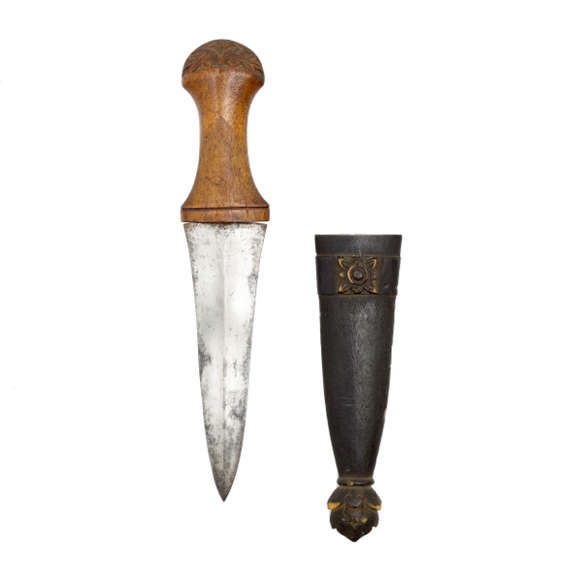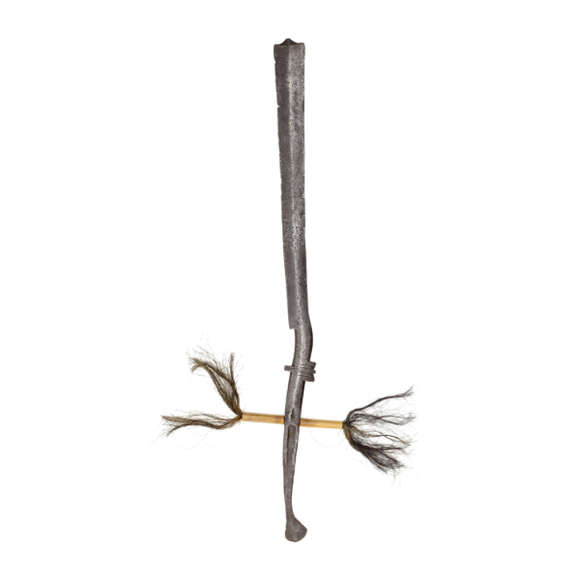Broad bladed example with horn hilt and engraved blade.
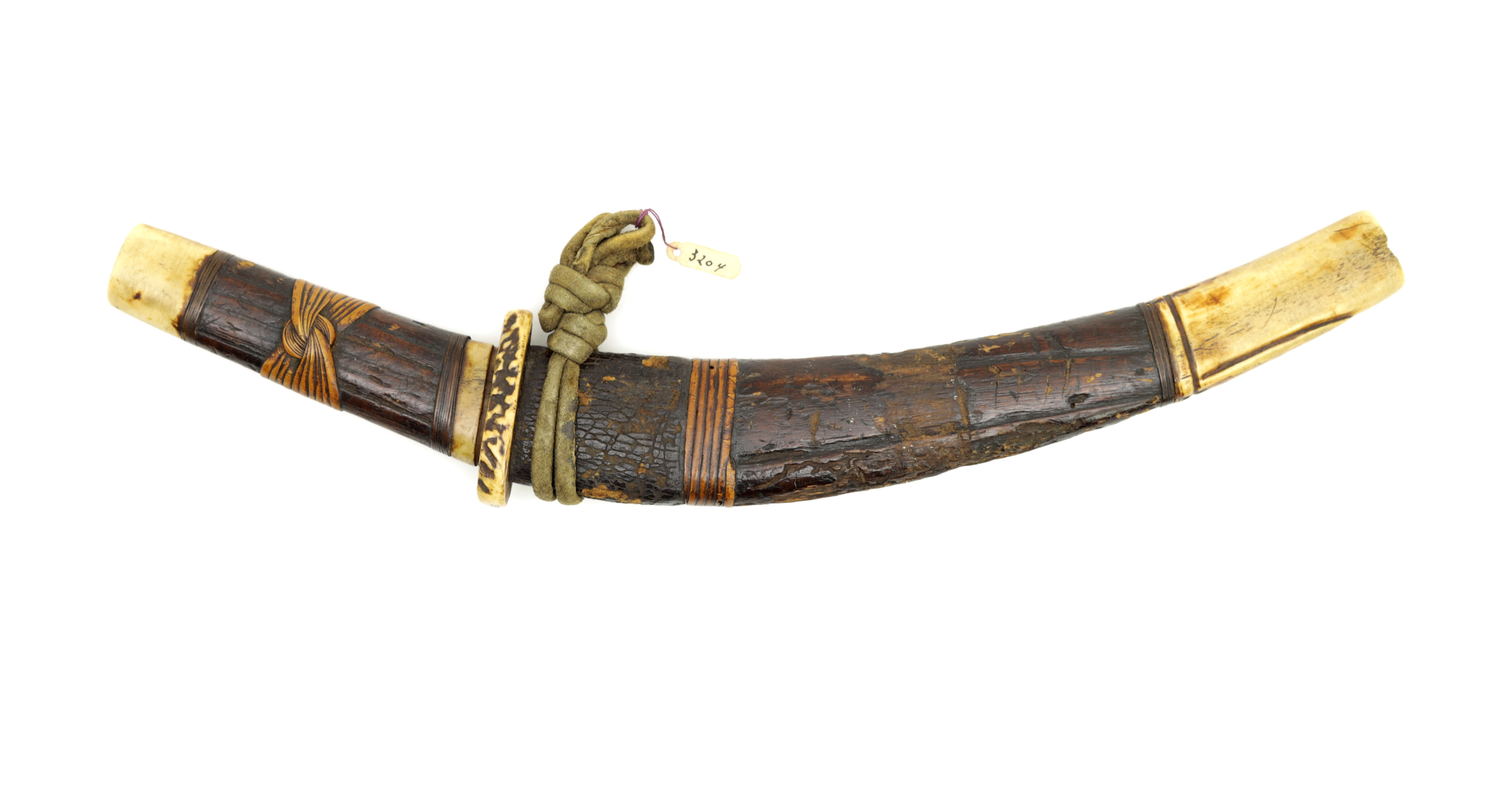
Sheathed 35.1 cm
Knife 22.7 cm
11.7 cm
Base 2.5 mm
Base 27 mm
Sheathed 140 grams
Knife 74 grams
Iron, wood, stag horn, deerskin, rattan
Ainu
18th-19th century
From an American collector
Introduction
Ainu men traditionally carried a utility knife called makiri, which was used for woodcarving and cutting food. Women carried a slightly smaller version called menoko-makiri which they used for food, and gathering fruits and bark.
On makiri knives the handle and blade both follow the same curve, with the knife's edge being on the outside of the curve. The edges have a single bevel, on the right side.
This example
While the style and workmanship of this knife points towards Ainu origin, it differs from typical Ainu work in a number of notable ways:
Blade. First and foremost, the blade is more curved than a typical makiri and it has the edge on the inside. There is also no edge bevel, but a thickening near the blade's spine.
Scabbard. When we move our attention to the hilt and scabbard, the hilt consists of a piece of wood with stag horn pommel and ferrule. The scabbard is made of two pieces of wood with stag horn mouthpiece and endpiece and a stag horn cord loop. Where the cord is usually attached to a suspension plate at the top of the scabbard, here we see it positioned on the side of the scabbard. A deerskin strap passed through that serves as the suspension.
Decoration. Both hilt and scabbard have rattan binding, beautifully knotted on the handle. The surfaces of all mounts are smooth, without the carving often found on Ainu pieces. Some old leather covers the upper part of the scabbard.
An old inventory label with the number 3204 is attached to the deerskin straps with purple cord.
Attribution
Despite the divergence from typical Ainu work, I still consider it an Ainu knife. The profile of the sheathed piece is very Ainu in form, and so is the use of the materials.
Also notice that the suspension is attached so the blade is worn with the edge up, just like regular makiri, a handy setup because Ainu tend to cut towards themselves when using knives.1
I have not been able to find any comparables in museum collections and I have the feeling this piece may be very old, from a more remote tribe or both. My mind goes towards Sakhalin island opposite of Manchuria who were known as reindeer herders, or perhaps the Kuril islands.
A very rare and unusual piece.
Condition
Insect damage to the scabbard, stable. An opening at the seam of the scabbard, caused by scraping of the knife's tip over time. Otherwise in pretty good shape. See photos.
Notes
1. Frederick Starr; The Ainu group at the Saint Louis exposition. Chicago, The Open Court Publishing Company, 1904. Page 106.
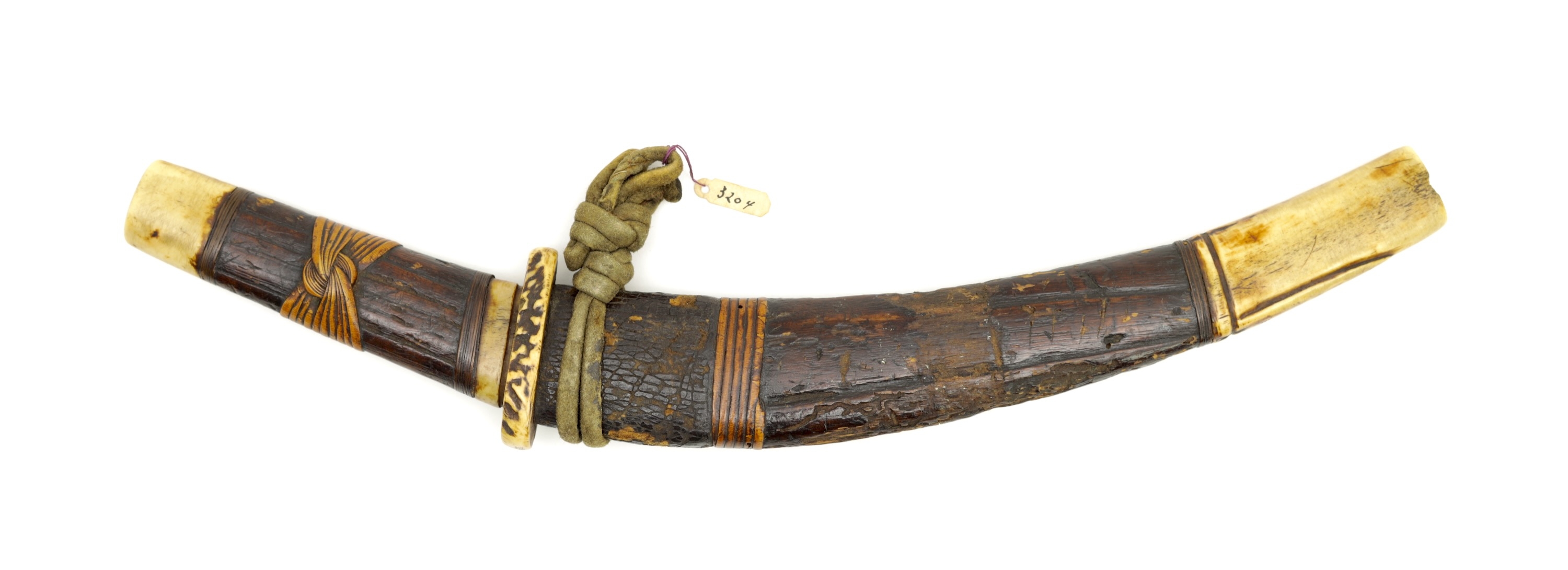
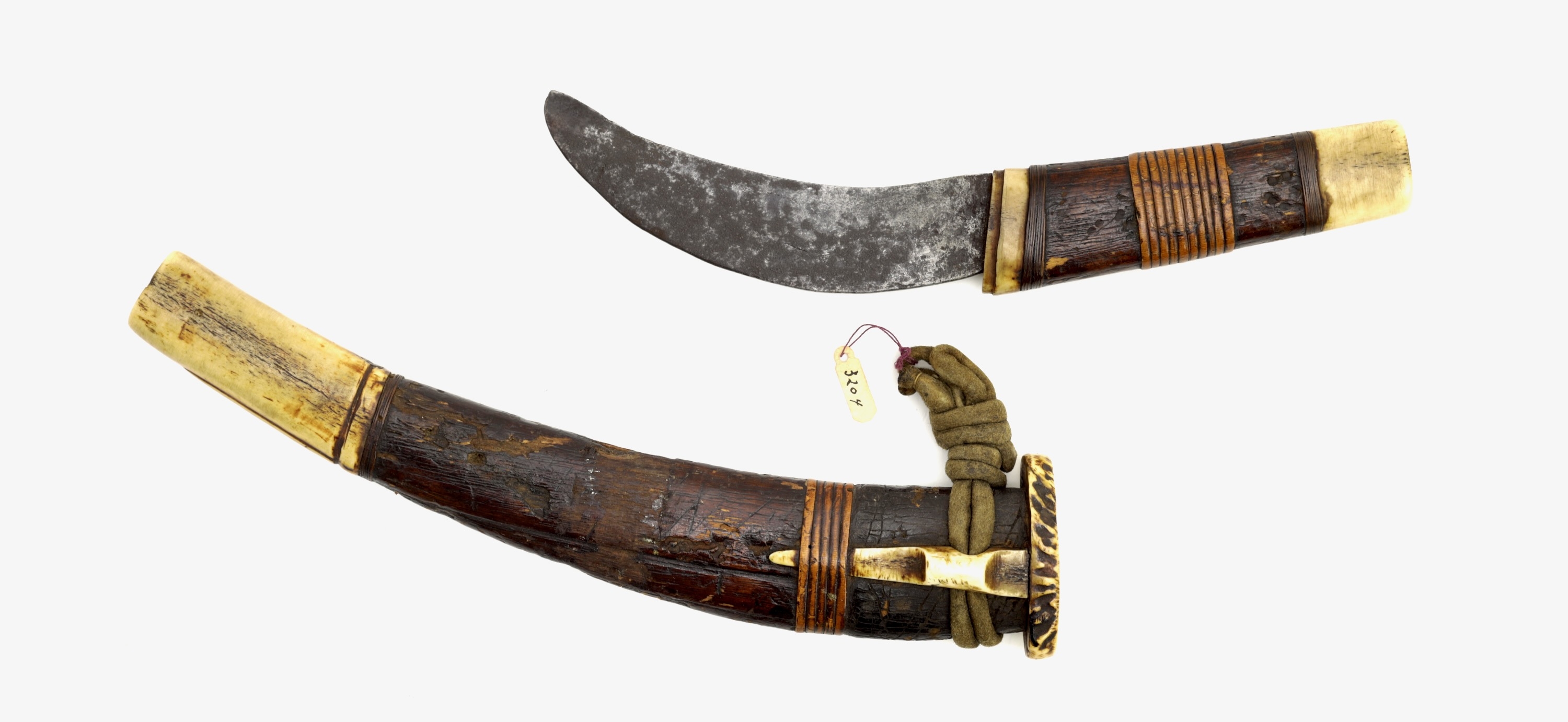
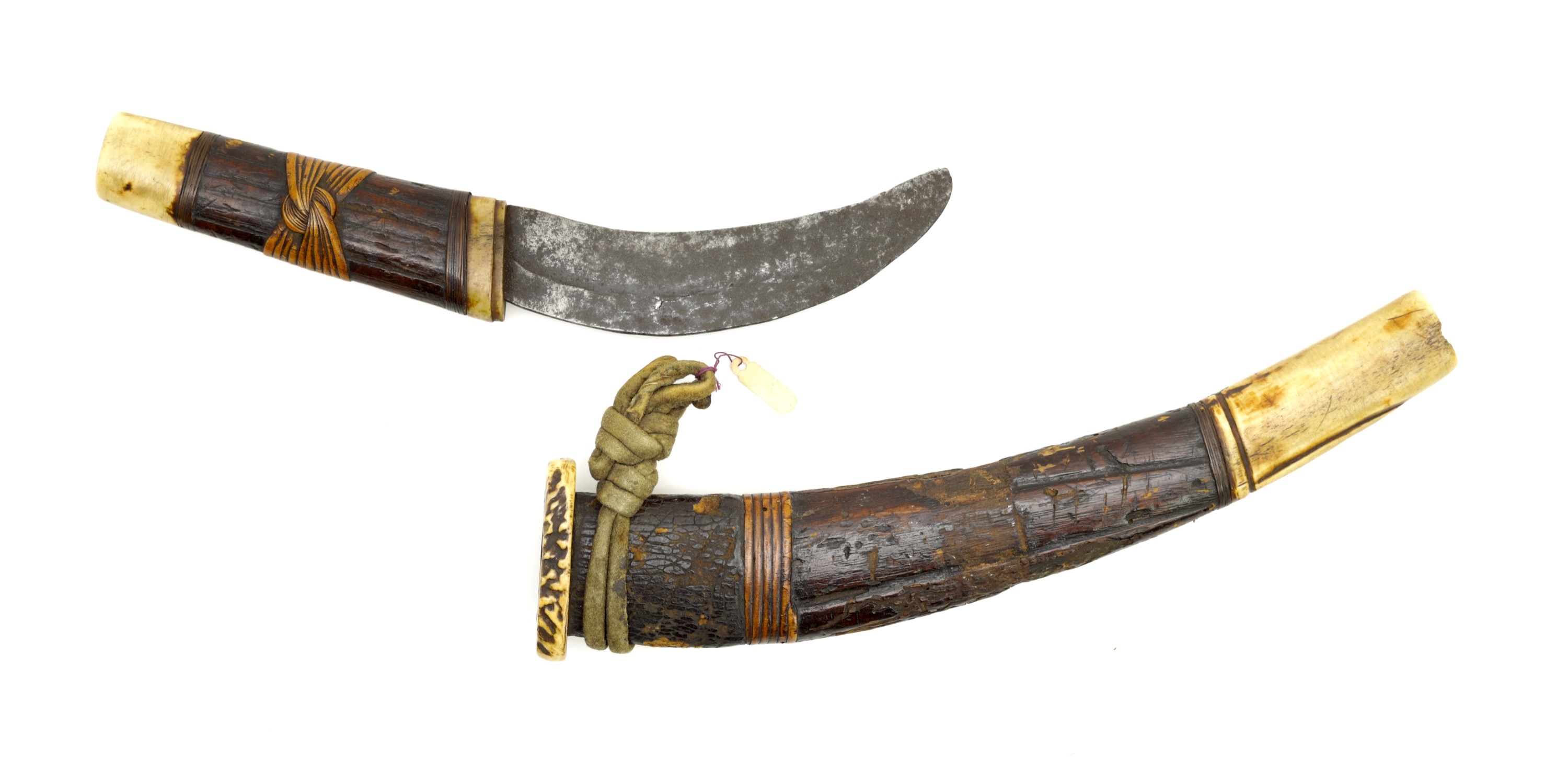


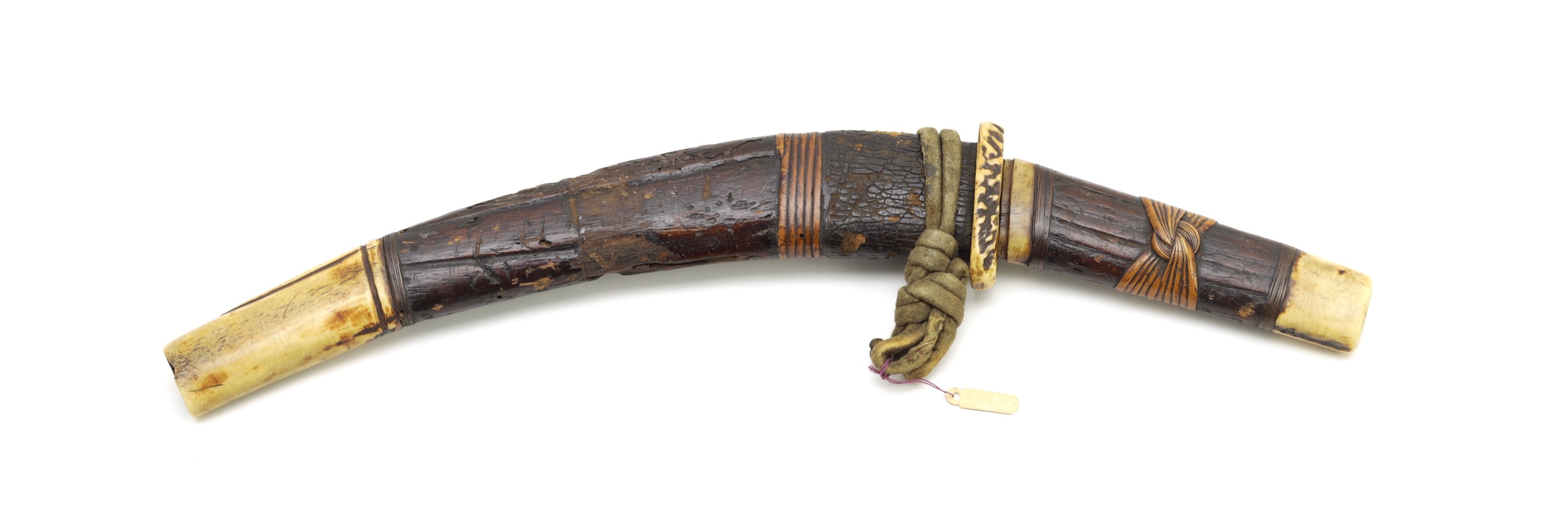
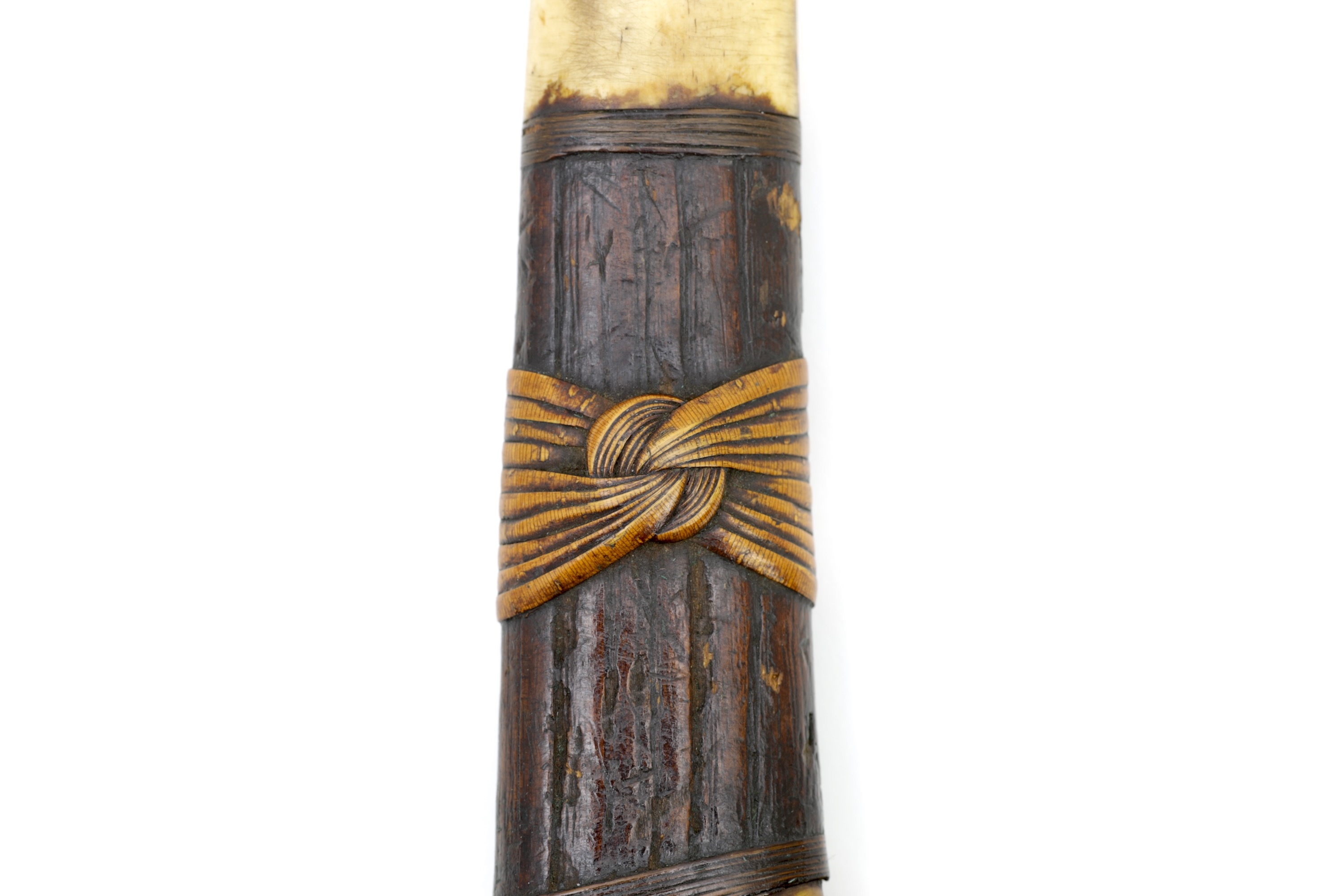
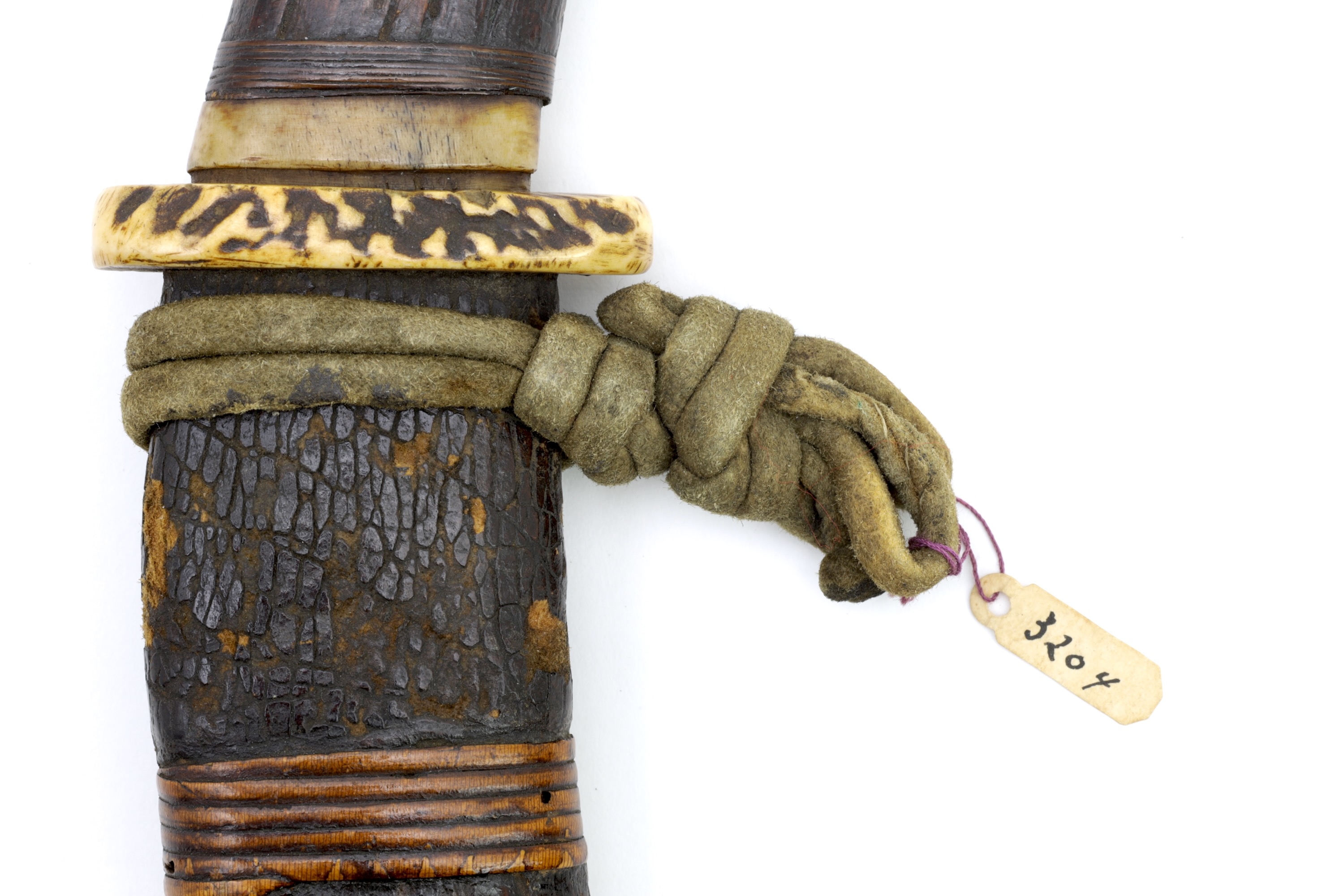
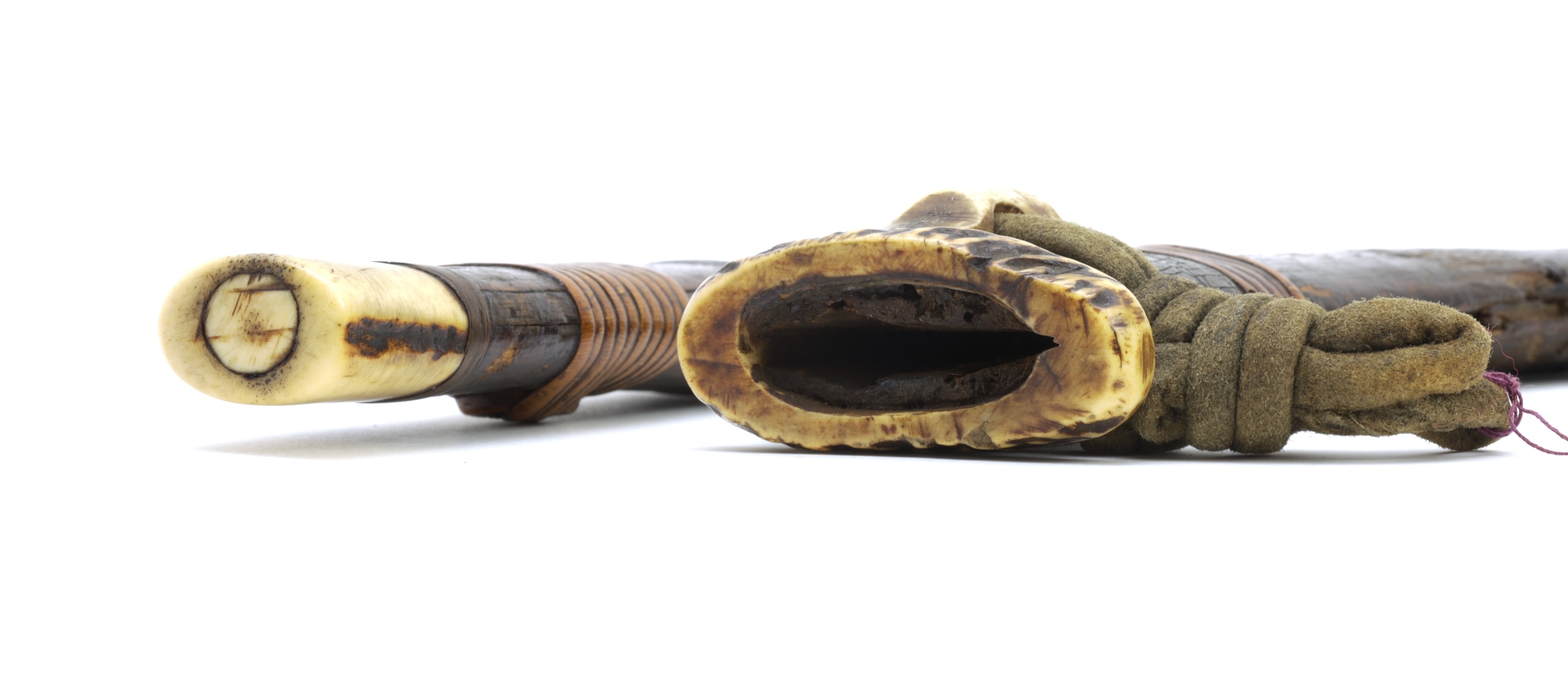
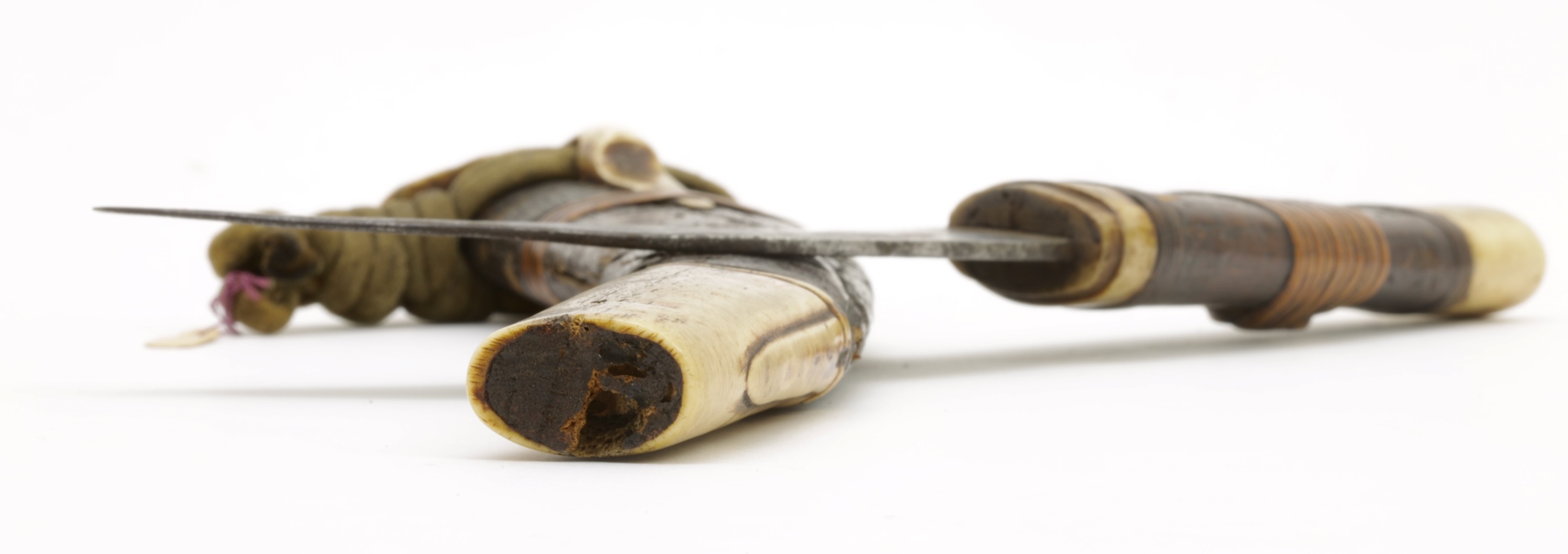
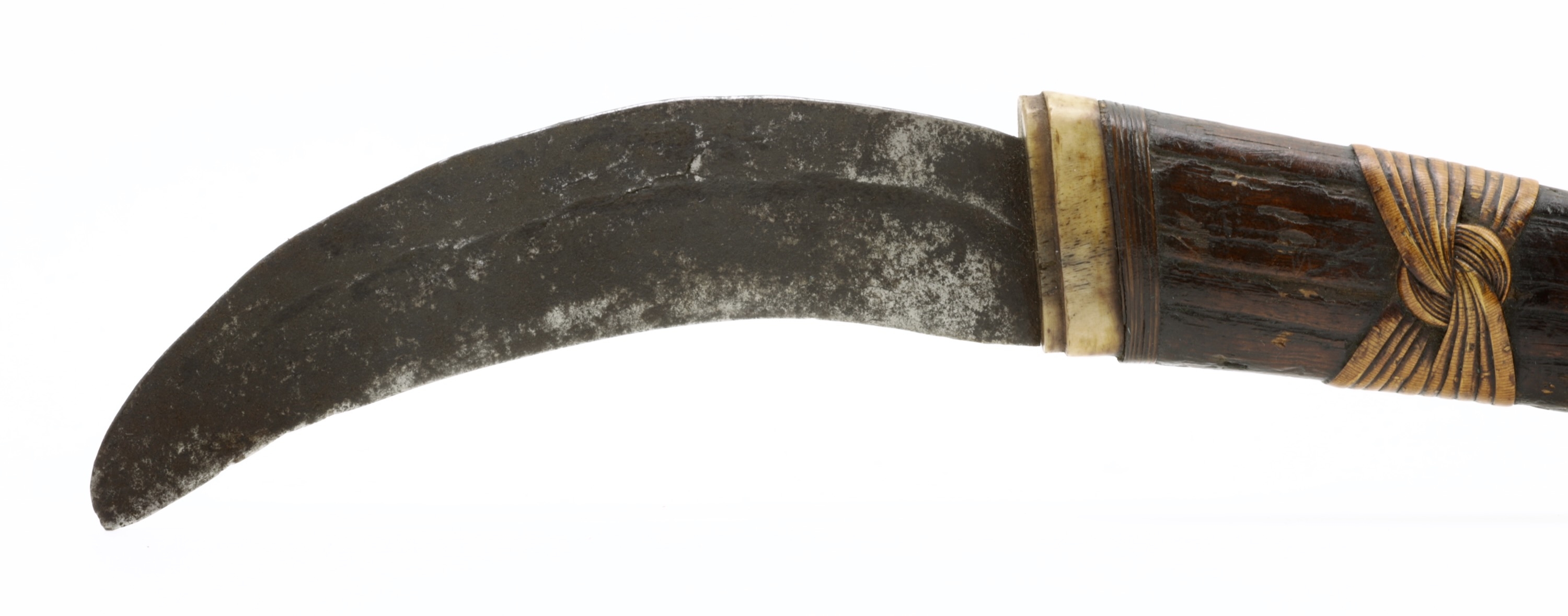
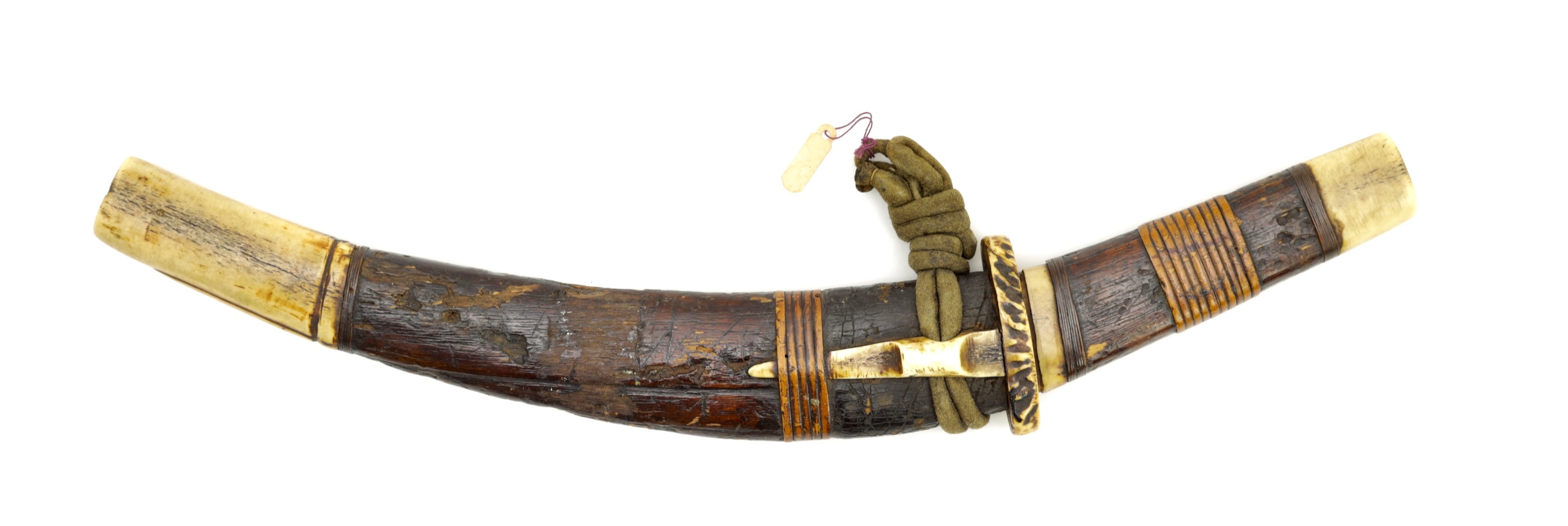
A rare type of dagger from South Kalimantan, loosely based on Islamic daggers seen worn by traders.
This peculiar sword was used by the Garo people of Assam for fighting, clearing the jungle, and animal…

